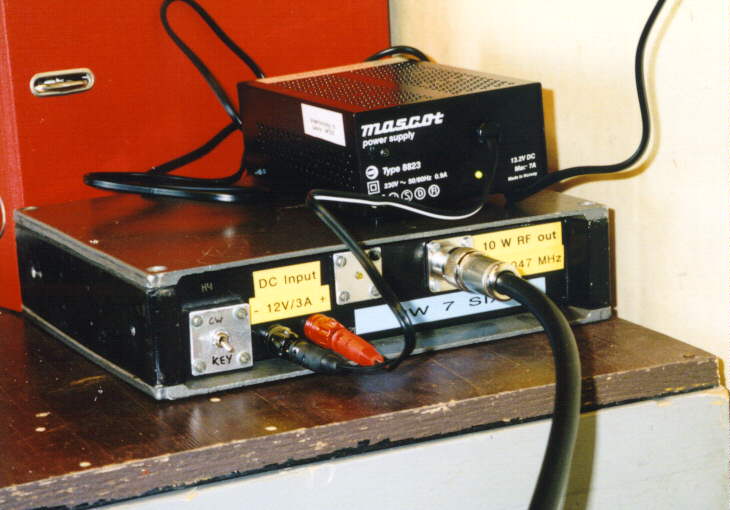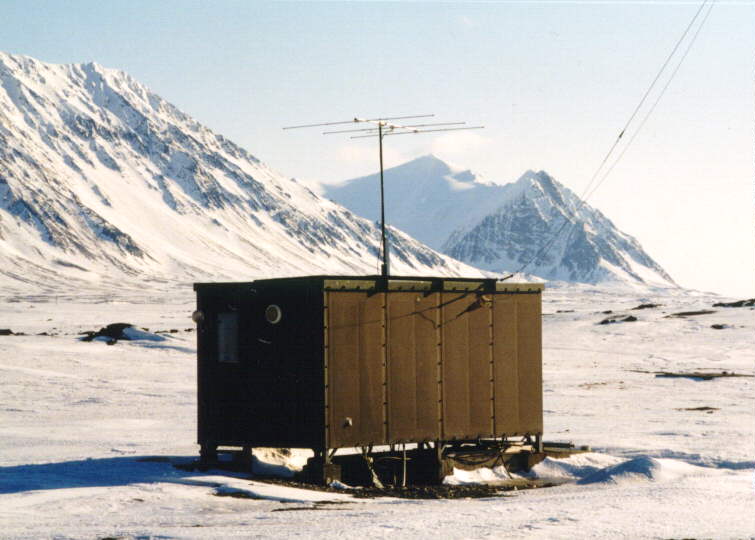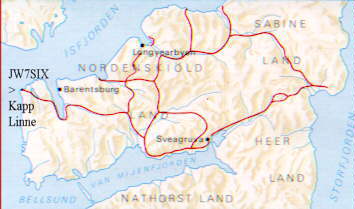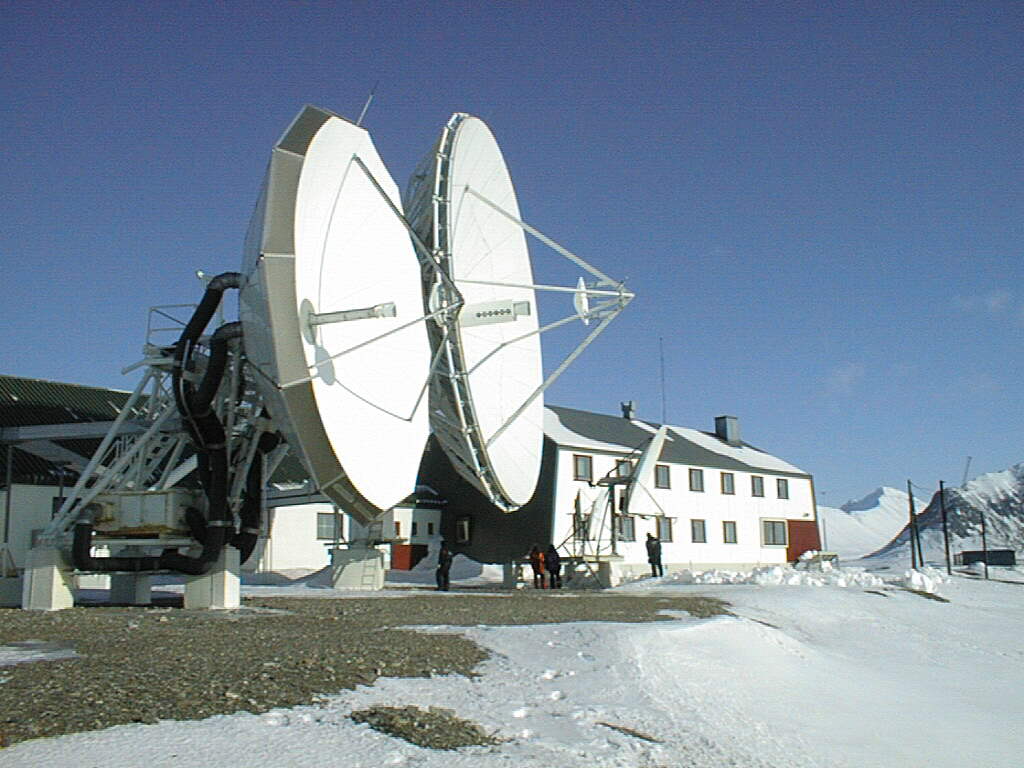JW7SIX is the World's northernmost 50 MHz beacon, right on the western coast of Svalbard.
It was first set up in April 1995 at the EISCAT Svalbard Radar site in JQ88AD.
One year later it was moved to the shack of the Svalbard Radio Club JW5E near Longyearbyen in JQ78TF.
Since 13 April 1999 the beacon operates from Kapp Linné in JQ68TB, in the immediate vicinity of Svalbards main telecommunication site Isfjord Radio.
|
The transmitter provides 10 W RF power on 50.447 MHz (until March 2014 the frequency was 50.047 MHz).
The keying sequence includes the callsign and the locator followed by a string of dots.
You may download the zipped circuit diagram of the code generator (96 kB, unfolds to 182 kB EPS-file).
The beacon antenna was sponsored by the UKSMG , the transmitter from ES1II/ES1CW and the power supply came from LA7QIA. The beacon responsible is LA0BY and reception reports may be sent to him.
|

|
|

|
The antenna is a solid 3-element-yagi (Cushcraft A50-3S), beaming due South.
The antenna is mounted on an aluminium tube attached to the fibreglass shelter, at 5,5 m above the ground.
The shelter houses a MF transmitter for coastal radio and has 230 V mains sockets readily available.
The take-off towards Europe is just perfect - and much better than from the previous locations.
Mountains give some 5-10 degrees elevation only in Eastern directions.
The picture shows the shelter with antenna viewed towards South-East.
|
Sporadic-E propagation to Europe is most likely to occur during the Summer, usually in the late evening, but Auroral-E may build up throughout the year. Reports have been received from many countries. See the beacon log for an indication of the most prospective season and daytime. The furthest observations were made by IK2GSO (3620 km) and IK0FTA (~4000 km) through propagation by Sporadic-E. On 28.5.2010 there was even one DXC spot from the Phillippines (DU7/PA0HIP)! Two-way 50 MHz contacts were made from Svalbard by JW/PB0AKB in 1990, JW0BY in 1995, JW8GV in 1997 and JW7QIA in 1996/1999 and later.
In case of beacon reception some local amateurs may be alerted (I do not know of any that are permanently on the island). From the clubstation JW5E there is a rather poor horizon towards Europe, definitely much worse than JW7SIX has.
|

|
You can visit Kapp Linné, go hiking in a spectacular scenery, watch out for a polar bear and get the experience of your life. Access is particularly easy from February to May, when you can drive there by snow-mobile (80 km ride). Note the red lines are snow-mobile trails!
Since 1999 regular boat transportation from Longyearbyen is available during the Summer. Need any more tourist information?
|
|

|
Isfjord Radio - Svalbards former telecommunication facility
(satellite communications are now replaced by marine fibre)
Since 1999 regular boat transportation from Longyearbyen is available during the Summer. For more tourist information look at the website of the Svalbard tourist bureau.
|
Related to the promotion of 50 MHz activity in general, and the establishment of JW7SIX at the current site in particular, the UK Six Metre Group (UKSMG) deserves the highest credits for their support. Join the UKSMG and enjoy receiving updated information on 50 MHz through their monthly bulletin!
This page was last updated on 24 April 2014.



